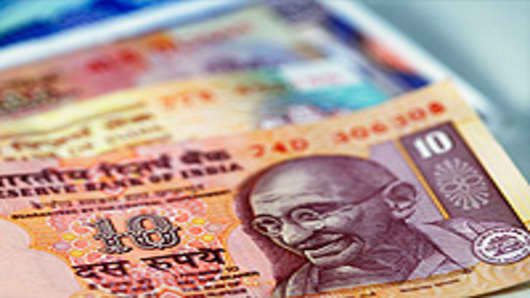The Reserve Bank of India has warned of deep imbalances in the country’s banking system saying that capital is being allocated to a handful of elite industrialists but not to the broader, more dynamic economy.
Such a constrained banking system in a large emerging market threatens to put a major drag on economic growth, according to the RBI and economists. It also poses a social threat in an economy that needs to create millions of jobs among a young population.
K.C. Chakrabarty, deputy governor of the central bank responsible for banking supervision, said India’s largely state-owned banking system needed urgently to build capacity to extend credit to a bigger share of the country’s 1.2bn people.
Speaking to the Financial Times, he warned that failure to achieve “financial inclusion” of the poor would mean that “this society will not survive” and that banks had to develop business models to cater for the broader population. As much as 65 per cent of the population in India do not have access to banking facilities.
“You cannot have financial inclusion in an exclusive society,” he said.
His appeal comes at a time when concerns are rising about debt owed by the country’s major industrialists, such as Vijay Mallya, the chairman of UB Group, and Anil Ambani, the chairman of Reliance ADAG, to state-owned banks. State-owned banks have also suffered a rise in non-performing assets as domestic borrowing costs rise.
On Thursday, the government requested that the RBI make public details of the top 100 industrialists who had defaulted on loans in recent months.
On the same day, the RBI bought back $2bn worth of bonds in response to concerns over liquidity in the banking system. Economists are airing their fears about the domestic banking system not being able to fund India’s fast paced growth against a background of retreating foreign capital flows, rising domestic borrowing costs and a depreciation of the rupee.
Many of India’s small businesses and the majority of its people, who earn livelihoods from the rural economy, are starved of credit in spite of the government offering interest subsidies on loans.
“It’s not the cost of credit that is important for the poor, it’s the availability of credit that is important,” Mr Chakrabarty said.
“Commerce for the poor is more viable than commerce for the rich…The banks are giving the Ambani [brothers] a loan at 9 per cent. Why can’t they give agriculturists a loan at 13 per cent?”
The deputy governor said that “corrective” measures were underway to reshape a banking system that serves only about half of the population. He expected that private banks would take the lead by finding technological solutions to reach a wider market.
Only 5 per cent of India’s 600,000 villages have bank branches. But as part of a financial inclusion policy, the RBI is making the allocation of licences for branches in metropolitan areas conditional on expanding services in rural areas.
Sunil Soni , the principal secretary for finance in the western state of Maharashtra, described agricultural credit across his state as “static” in spite of rising food prices putting more money in farmers’ pockets.
“The agricultural credit from public sector banks has remained stagnant for the last few years….We have a long distance to go,” he said.
Earlier this month, Moody’s, the credit ratings agency, changed its outlook on the Indian banking system for the next 18 months from stable to negative. It said it expected the operating environment, capitalisation levels, asset quality and profitability of banks to deteriorate during the period.


